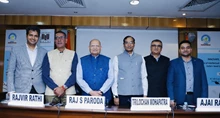
Furthermore, their incomes from farming are lower than their profits from non-farm occupations. The Forum of Enterprises for Equitable Development (FEED) conducted the "Annual Survey of States of Marginal Farmers in India" survey. The research was based on a telephone poll of 6115 people from 20 different states.
According to the report, over two-thirds of farmers' households (68.29%) engaged in non-farm activities to supplement their crop cultivation revenue. They work in daily wage labour tasks such as road construction, housing construction, and so forth.
The main sources of income for marginal farmers are daily salary and non-farm income, and they have kept their marginal holding as an asset. The average agriculture income is Rs 42,107, while non-farm income is Rs 62,439 and livestock income is Rs 55,511.
"The question is which government survey, and our survey asks why are marginal landholders considered 'farmers,'" explains Sandeep Ghosh, the study's leader. The survey also highlighted marginal farmers' incapacity to benefit from the government's scheme. Farmers in rural areas have been slow to profit from Agri-infrastructure such as seed banks, finance centres, warehouses, soil testing facilities, fertilizer shops, and custom hiring centres.
For example, while over 82% of marginal farmers are aware of the flagship scheme PM Kisan, which gives Rs 6000 financial assistance to farmers, only about 50% benefit from it. "It demonstrates the existing disparities on the ground that the government must address," says Dr PS Brithal, Director of the ICAR - National Institute of Agricultural Economics and Policy Research.
The study also emphasized the fact that marginal farmers' crop patterns are shifting. They prefer potato and mustard cultivation over cereal crops such as paddy, wheat, and legumes. "There is a need to reorient agri-extension services and make them more accessible to marginal farmers," says VV Sadamate, former Agriculture Advisor to the Government of India.











